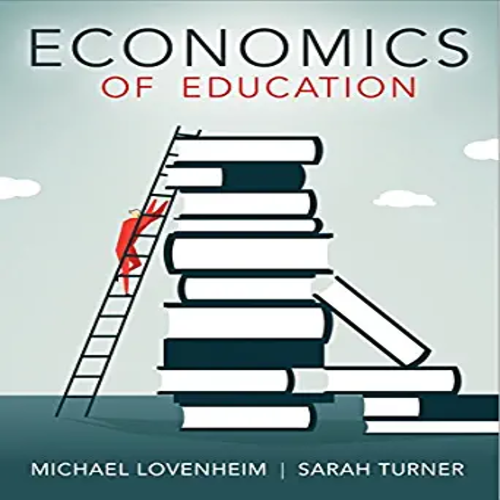Solution Manual for Economics of Education 1st Edition by Lovenheim and Turner ISBN 0716777045 9780716777045
$35.00 Original price was: $35.00.$26.50Current price is: $26.50.
Click Icon bellow to Download sample Economics of Education 1st Edition by Lovenheim and Turner Solution Manual 0716777045 9780716777045
This is completed downloadable of for Economics of Education 1st Edition by Michael Lovenheim and Sarah E. Turner Solution Manual

Instant download Economics of Education 1st Edition by Michael Lovenheim and Sarah E. Turner Solution Manual pdf docx epub after payment.
Product Details:
Language: English
ISBN-10: 0716777045
ISBN-13: 978-0716777045
ISBN-13: 9780716777045
Author: Michael Lovenheim and Sarah E. Turner
Table of Content:
I. Introduction and Background
Chapter 1 Why do Economists Study Education Policy?
1.1 Defining the Economics of Education
1.2 Studying the Economics of Education
1.3 What Can Economics Teach Us About Education Policies?
1.4 The Road Ahead: Objectives and Organization of the Book
1.5 Conclusion
Chapter 2 The Structure and History of Education Markets in the US
2.1 Defining Education Markets
2.2 The Roles of Government in Education
2.3 Development of Education Institutions and Attainment in the United States
2.4 Conclusion
Chapter 3 Empirical Tools of Education Economics
3.1 Descriptive Evidence and the Distinction between Correlation and Causation
3.2 Randomized Control Trials: The Experimental Ideal
3.3 Nonexperimental Methods
3.4 Conclusion
II. The Foundations of Education Production and Investment
Chapter 4 The Human Capital Model
4.1 What is Human Capital?
4.2 The Costs and Benefits of an Education
4.3 Basic Setup of the Human Capital Model
4.4 Present Value Formulation and Educational Investments
4.5 Predictions from the Investment Model of Education
4.6 Continuous Schooling Choices
4.7 Why Does Educational Attainment Differ Among Individuals?
4.8 Conclusions and Questions for Empirical Work
Chapter 5 The Signaling Model: An Alternative to the Human Capital Framework
5.1 The Motivation for the Signaling Model
5.2 Setup of the Signaling Model
5.3 Signaling Model Equilibrium
5.4 Signals and Indices
5.5 The Importance of Distinguishing Between the Human Capital and Signaling Models
5.6 Empirical Evidence on Signaling Models
5.7 Conclusion
Chapter 6 The Returns to Education Investment
6.1 The Difficulty of Estimating the Causal Effect of Education on Earnings
6.2 Empirical Evidence on the Returns to Educational Attainment
6.3 Empirical Evidence on the Social Returns to Educational Attainment
6.4 Empirical Evidence on the Private Returns to Education Quality
6.5 Conclusion
Chapter 7 How Knowledge is Produced: The Education Production Function
7.1 Microeconomics of Production Functions
7.2 Implications for Education Policy
7.3 Challenges to Estimating Education Production Functions
7.4 Conclusion
III. Elementary and Secondary Education Policy
Chapter 8. The Financing of Local Public Schools
8.1 School Financing in the United States: Trends and Levels
8.2 Local School Choice: “Voting with your Feet”
8.3 The School Finance Reform Movement
8.4 Forms of School Finance Centralization and Aid
8.5 Conclusion
Chapter 9 Does Money Matter? The Effect of Resource and Input-Based Policies
9.1 The “Hanushek Critique”
9.2 The Effect of Class Size Reduction Policies
9.3 Teacher Quality
9.4 Conclusion
Chapter 10 School Choice: A Market-based Approach to Education Reform
10.1 Economic Theory of School Choice
10.2 School Choice Policies
10.3. Effects of School Choice Policies on Student Outcomes
10.4 The Effect of School Choice Policies on Competition and Traditional Public Schools
10.5 Conclusion
Chapter 11 Test-Based School Accountability Programs
11.1 Accountability: Measurement, Rewards and Punishment
11.2 School Accountability Measures
11.3 Do School Accountability Policies Change Student Performance?
11.4 Do Student Accountability Policies Change Student Performance?
11.5 Conclusion
Chapter 12 Teacher Labor Markets
12.1 Supply and Demand in Teacher Labor Markets
12.2 Who Becomes a Teacher (and Does it Matter)?
12.3 Teachers Unions
12.4 Teacher Incentive Pay
12.5 Teacher Certification
12.6 Conclusion
IV. Higher Education Policy
Chapter 13 Market Dimensions of Higher Education
13.1. What do Universities Do?
13.2. The Structure of Higher Education in the United States
13.3. The Financing of Higher Education
13.4. Conclusion
Chapter 14 Student Aid Policy and Collegiate Outcomes
14.1. Why is Financial Aid Necessary?
14.2. The Structure of Financial Aid in the US
14.3. The Effect of Financial Aid on Behavior
14.4. Student Debt
14.5. Conclusion
Chapter 15 The Economics of College Admission and College Life
15.1. The Economics of College Choice
15.2. Beyond Admission: Outcomes in the Collegiate Years
15.3. College Comple
People Also Search:
economics education 1st recruitment
education 1st year book
economics education book 1st year pdf
education Economics 1st grade
education 1st semester book
economics 1st chapter





